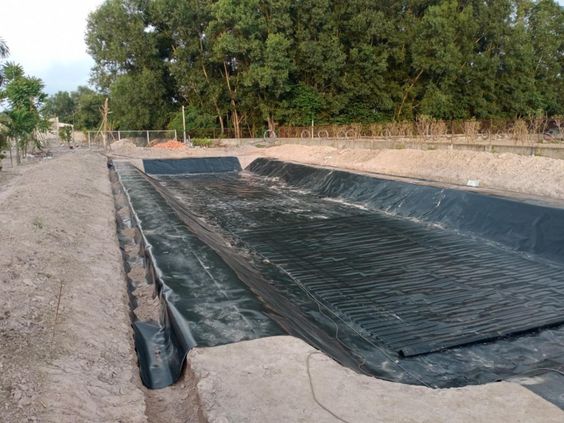In the world of materials, HDPE sheets (High-Density Polyethylene) have become an essential choice across various industries. Known for their durability, versatility, and environmental benefits, HDPE sheets are used in everything from construction projects to packaging solutions. But what exactly makes HDPE sheets stand out, and why is their quality so important?
In this detailed blog, we’ll explore the uses of HDPE sheets, what factors contribute to their quality, and why they are favored over other materials. Whether you’re a contractor, business owner, or simply curious about industrial materials, this guide will walk you through the fundamentals of HDPE sheets and how they are utilized in everyday applications.
What Are HDPE Sheets?
Before diving into the uses, let’s first understand what HDPE is.
1. What Does HDPE Stand For?
HDPE stands for High-Density Polyethylene, a type of thermoplastic polymer made from petroleum. It is known for its high strength-to-density ratio, which makes it more rigid and durable compared to other forms of polyethylene.
2. Characteristics of HDPE Sheets
HDPE sheets are incredibly lightweight but strong. Some of their notable properties include:
- High impact resistance
- Low moisture absorption
- Chemical resistance
- UV resistance (in UV-stabilized versions)
- Excellent weathering capabilities
These characteristics make HDPE a popular choice for a range of applications that require a resilient and durable material.
Top Uses of HDPE Sheets
Thanks to its versatility, HDPE is used in a wide variety of industries. Let’s explore some of the most common applications:
1. Construction Industry
HDPE sheets are widely used in the construction industry for purposes such as:
- Ground protection: HDPE sheets can be laid down to protect the ground in heavy construction areas, providing a barrier between construction machinery and sensitive soil.
- Concrete forming: Contractors use HDPE sheets as mold formers because of their high strength and easy removal properties after the concrete has set.
- Wall linings: HDPE sheets are often used for lining walls in high-moisture environments like bathrooms, locker rooms, and commercial kitchens.
2. Packaging and Storage Solutions
HDPE is commonly used in packaging, thanks to its lightweight and moisture-resistant properties. Some examples include:
- Plastic bottles and containers: Many everyday plastic products, such as milk jugs and detergent bottles, are made from HDPE because it’s both safe for food storage and extremely durable.
- Liners for storage tanks: In industries where liquids or chemicals are stored, HDPE sheets are used as liners to prevent leaks or contamination.
3. Agricultural Uses
In agriculture, HDPE sheets play a vital role, particularly in:
- Irrigation systems: HDPE sheets are used as lining in ponds, canals, and reservoirs to prevent water loss.
- Greenhouses: HDPE is also a preferred material for greenhouse covers, as it is UV-resistant and long-lasting.
4. Marine Applications
Due to its resistance to moisture and saltwater, HDPE sheets are often used in marine environments. Some common uses include:
- Dock fenders: HDPE sheets are used to line docks to prevent damage to boats and infrastructure.
- Boat parts: HDPE sheets are also commonly used in boat construction, as the material doesn’t corrode when exposed to water.
5. Signage and Displays
Because HDPE is resistant to weathering and UV radiation, it is widely used in outdoor signage. Its durability ensures that signs made from HDPE sheets can withstand harsh weather conditions while retaining their appearance over time.
Why Is the Quality of HDPE Sheets Important?
Not all HDPE sheets are created equal. The quality of HDPE sheets plays a crucial role in their effectiveness for various applications. Here are key factors that determine the quality of HDPE sheets:
1. Density and Thickness
One of the most important indicators of HDPE sheet quality is its density and thickness. A higher-density sheet provides greater rigidity and strength, which is essential in heavy-duty applications such as construction or marine use.
2. UV Resistance
For outdoor applications, UV resistance is a critical quality factor. Over time, UV rays can degrade materials, causing them to become brittle or discolored. High-quality HDPE sheets are often UV-stabilized, which makes them resistant to sun damage and ensures they maintain their properties and appearance even after prolonged exposure to sunlight.
3. Chemical Resistance
Another aspect of quality is the chemical resistance of the HDPE sheets. High-quality HDPE is resistant to a variety of chemicals, including acids, oils, and solvents, making it suitable for industrial and chemical storage applications.
4. Environmental Impact
Sustainability has become a growing concern for businesses and consumers alike. High-quality HDPE sheets are typically made from recycled materials and can be recycled again after their use, reducing environmental impact. Ensuring that the HDPE sheets you’re using come from a reputable source with responsible manufacturing practices is crucial in today’s eco-conscious market.
How to Choose the Right HDPE Sheets
With so many options on the market, selecting the right HDPE sheets can be a bit overwhelming. Here are some factors to consider:
1. Application-Specific Requirements
Different applications require HDPE sheets with different specifications. For instance, if you need HDPE sheets for marine use, you’ll want sheets that are UV-resistant and moisture-proof. If you’re using HDPE for packaging, you might prioritize flexibility and lightweight properties.
2. Size and Thickness
HDPE sheets come in various sizes and thicknesses. Depending on your project, you’ll need to select a sheet that can withstand the required stress and wear. For example, thicker sheets provide more durability and are preferred for heavy-duty industrial applications, while thinner sheets may be more suitable for lightweight uses like signage.
3. Color Options
HDPE sheets are available in a variety of colors. For outdoor signage or branding, color stability is important. Opt for HDPE sheets that offer long-lasting color retention, especially if they are exposed to outdoor elements.
4. Budget Considerations
While quality is important, you also need to consider your budget. Higher-quality HDPE sheets with features like UV resistance and high chemical resistance may come at a higher cost. However, investing in better-quality HDPE sheets can save money in the long run by reducing replacement and maintenance costs.
The Environmental Impact of HDPE Sheets
HDPE is considered an eco-friendly material for several reasons. Let’s look at how using HDPE sheets can contribute to sustainability:
1. Recyclability
One of the major advantages of HDPE is that it is 100% recyclable. After HDPE sheets reach the end of their life cycle, they can be repurposed into new products without degrading their quality, reducing the amount of waste that ends up in landfills.
2. Energy Efficiency
The production of HDPE sheets requires less energy compared to other plastics. Additionally, because HDPE is lightweight, it requires less energy to transport, which reduces the overall carbon footprint of moving the materials.
3. Safe for the Environment
Unlike some plastics that release harmful chemicals into the environment, HDPE is chemically inert, meaning it doesn’t leach toxins into the soil or water, making it a safer choice for use in agricultural, marine, and packaging applications.
Conclusion
HDPE sheets have proven themselves as a versatile and highly durable material, used in a wide array of industries including construction, packaging, agriculture, and marine. Their strength, chemical resistance, and ability to withstand harsh environmental conditions make them an ideal choice for both indoor and outdoor applications.
Understanding the quality of HDPE sheets is crucial to ensuring you get the right product for your needs. Whether you’re looking for UV-stabilized sheets for outdoor use or chemically resistant sheets for industrial storage, choosing high-quality HDPE will deliver better performance and longevity.
FAQs
1. Can HDPE sheets be used for outdoor applications?
Yes, HDPE sheets are widely used for outdoor applications such as marine environments, signage, and construction due to their UV and weather resistance.
2. Are HDPE sheets recyclable?
Absolutely! HDPE is one of the most recyclable plastics. Once HDPE sheets have reached the end of their life, they can be recycled into new products, reducing waste and environmental impact.
3. How thick should HDPE sheets be for construction purposes?
The thickness of HDPE sheets for construction depends on the specific application, but generally, thicker sheets are preferred for heavy-duty applications to ensure durability and strength.
4. Is HDPE resistant to chemicals?
Yes, HDPE sheets are highly resistant to a range of chemicals, including acids, oils, and solvents, making them suitable for industrial use.




